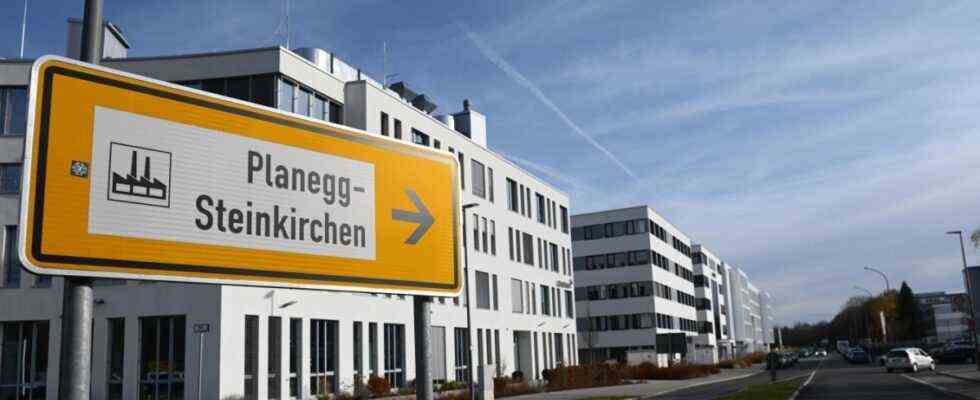Resistance to expanding the industrial area in the Steinkirchen district of Planegg on the border with Graefelfing is growing. Massive criticism of the planned development of around 10,000 square meters of previous arable land east of Semmelweisstrasse has come from the Federal Nature Conservation Union and some local councils in particular. The opponents have now managed to get the local council to meet at 7.15 p.m. in the Kupferhaus for a special public meeting this Monday, December 6th.
Here the pros and cons are to be discussed. It is also about a number of suggestions from nature conservationists to examine other free areas in Steinkirchen instead of the arable land – there are enough of them, it is argued. It is unlikely, however, that the majority of the municipal councils will withdraw the already signaled commitment to the companies Sanacorp and Eurofins.
Conservationists, residents and local politicians are resisting building on the open spaces on Semmelweisstrasse in Steinkirchen.
(Photo: Stephan Rumpf)
In a five-page open letter to the mayor of Würmtal and local councilors, Hans-Dietrich Kubisch, who has been a member of the Nature Conservation Association for 40 years and has been chairman of the former Planegg-Graefelfing local group, lists the reasons why he considers the site on Semmelweisstrasse to be unsuitable. Kubisch is considered a profound expert on the Würmtal; with his significant collaboration, for example, the green corridor and the biotope on the light path between Graefelfing and Planegg were developed. It is located directly on the planned expansion area and also borders the arable land of a “Bioland” farmer, as Kubisch emphasizes.
An extension of the commercial area would make organic cultivation considerably more difficult. Kubisch accuses the municipality of Planegg of having suppressed the fact that it is not just about 10,000 square meters, but that the necessary expansion of Semmelweisstrasse would devour a further 2500 square meters. Planegg’s mayor Hermann Nafziger (CSU) had repeatedly denied this.
“Blue-eyed” is what Kubisch calls the argument that the roof areas of the new buildings would be ecologically upgraded. He refers to technical systems on the roofs that cannot be placed “in the basement”. Kubisch doubts that the area favored by the proponents is “ecologically inferior arable monoculture”: “The current zoning plan speaks a completely different language.”
Above all, however, the nature conservation expert is convinced that – in contrast to statements from the Planegger administration – there is still “sufficient free space for expansion”, for example the property south of the Lidl discount store. According to Kubisch, the community of heirs there is quite ready for sale, contrary to statements from the town hall. In addition, a number of existing low-rise buildings can be built over “relatively easily”.
The former mayor of Planegg, Anneliese Bradel (Green Group 21), argues in a very similar way. She prefers her statement with the sentence “Another chance for nature”. Bradel refers to the citizen’s report drawn up on the occasion of the zoning plan that has just been adopted, in which a large majority of Planeggers gave “the protection of green spaces top priority”. Even Bradel and with her the two councilors Angelika Lawo and Eva Schreier do not believe that “all available alternatives have already been examined intensively and with great vigor”. There was also insufficient negotiation with certain landowners.
Bradel very fundamentally: “Unrestrained growth may bring – not guaranteed – more money into the community treasury, but it also has bad side effects. even more house pressure. “
The Bund Naturschutz, Kreisgruppe München, refers to a new statistic, according to which an area in Bavaria “the size of 16 soccer fields” is sealed every day. The plans in Steinkirchen also do not meet the requirements of the Climate Protection Act of March 2021, to which Planegg also feels obliged. The group branches could also be expanded using existing buildings: “New buildings are often associated with a significantly larger carbon footprint.”

